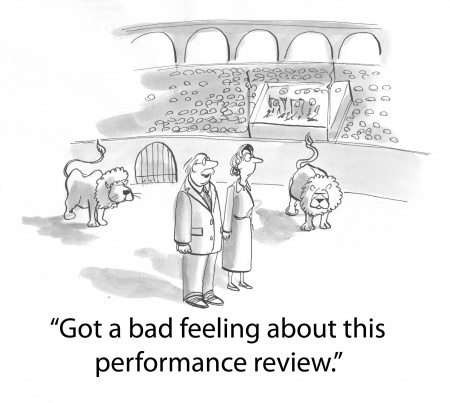Magazine revealed a survey in which 98 percent of U.S. staff admitted finding annual reviews unnecessary (a quarter of those respondents were HR folks). That’s a nearly unanimous vote against reviews. But perhaps it’s not the “what” but the “how” that gives performance appraising an unsatisfactory rating. We looked at various performance reviews and found a paradigm shift happening that could change the face of reviews as we know them today.
Over the years, performance reviews have become similar to receiving a report card. They’re often based on quantified data, rank employees against each other, and at times bring up issues never previously discussed. That report card often meant “life or death” to an employee’s future at the company. This type of review is often called stack ranking, vitality curving, or even “rank and yank.” The review style rose quickly in popularity in the 1980s through companies like General Electric, Motorola, IBM, and Ford. Its virtues, however, have long lost their luster.
For years, Microsoft was berated for its own stack ranking system in which managers graded employees against one another on a curve, forcing a certain number of employees into the category of ‘under performers.’ While the system made easy work in identifying star employees, The Washington Post reports that “many current and former Microsoft employees complained the system resulted in capricious rankings, power struggles among managers, and unhealthy competition among colleagues.”
This past November, Microsoft announced it would be abandoning stack ranking for a program focused on more qualitative measures of personal performance and teamwork. An email CNN released from an HR manager to global employees makes their intentions very clear: “No more curve” and “no more rankings.”
 What many job performance experts are recommending today—and what Microsoft is experimenting with—is more flexibility and authenticity with praise and criticism whether it’s review time or not. In his latest book, UCLA’s Anderson School of Management’s Samuel A. Culbert writes, “Employees need evaluations they can believe, not the fraudulent ones they receive. They need evaluations that are dictated by need, not a date on the calendar. They need evaluations that make them strive to improve, not pretend they are perfect.”
What many job performance experts are recommending today—and what Microsoft is experimenting with—is more flexibility and authenticity with praise and criticism whether it’s review time or not. In his latest book, UCLA’s Anderson School of Management’s Samuel A. Culbert writes, “Employees need evaluations they can believe, not the fraudulent ones they receive. They need evaluations that are dictated by need, not a date on the calendar. They need evaluations that make them strive to improve, not pretend they are perfect.”
So does higher quality and lower quantity measurements mean the end to automated review systems? Not necessarily. Companies like software provider SuccessFactors, an SAP Company, are providing digital tools to help managers make the performance review process a more pervasive and meaningful part of everyday business. Take SuccessFactors’ Performance & Goals solution, for instance. The dashboard is easily accessible via desktop, laptop or mobile and allows for traditional performance metrics to be combined with engagement, goal refinement, coaching and other tools as needed.
“We believe there is a need for higher quality, more accurate and meaningful reviews that ensure top performers are identified and retained, compliance is maintained, and limited budgets are most effectively managed,” explains Mark Brandau, Vice President of Product Marketing, SAP Cloud.
“We also see the need for comprehensive performance management as being able to deliver higher quality reviews, offer ways to improve dialogue between managers and employees around performance and goals, and provide continuous development. What our customers find valuable with the SuccessFactors Performance & Goals solution is the ability to ‘tune/adjust’ these approaches based on their unique business needs within one comprehensive offering.”
Call it an evolutionary process, if you will. This means that some performance review strategies companies have held onto from days past may need to be retired. Is your performance review process in need of a makeover? Do you think the changes companies like Microsoft are embracing will make a difference in how employees feel about reviews? We’d love to hear your thoughts.
First image credit: imtmphoto / 123RF Stock Photo
Second image credit: andrewgenn / 123RF Stock Photo



